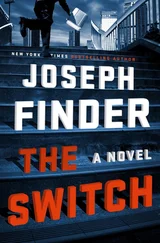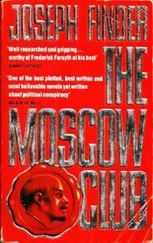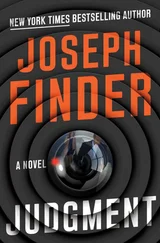“I know you’d like to speak for everyone. But maybe some of us prefer to speak for themselves.” Nick stood up, nodding at the tall bespectacled man who had just let himself into the room.
Willard Osgood.
The central monitoring station for Fenwicke Estates also serviced three other gated communities in and around Fenwick, including Safe Harbor, Whitewood Farms, and Catamount Acres. It was a low-slung windowless building located in an anonymous area of strip malls and fast-food restaurants. It could have been a warehouse. It was surrounded by chain-link fencing and was unmarked except for a street number. Audrey knew this was for security reasons. Out back were two hulking emergency diesel generators.
When in doubt, get a warrant. You couldn’t count on people to be cooperative, even in an emergency, so she’d called in for a search warrant, had it faxed over to the central monitoring station, to the attention of the facility’s general manager. Police headquarters had all that information on file.
The assistant operations manager, Bryan Mundy, was a man in a wheelchair who was as cooperative as could be, as it turned out. He was also extremely voluble, which was annoying, but she nodded and smiled pleasantly, silently urging him to hurry. She pretended to be interested, but not too interested.
As he led her through a maze of cubicles where women, mostly, sat in front of computers wearing headsets, he maneuvered his chair deftly and boasted about how they also monitored fire alarms for quite a few businesses and residences in the area. He talked about how they were connected via secure Internet protocol to the many cameras and guard booths they monitored. About how they did live remote viewing of all cameras via a Web browser. Rolling through another area where other people, mostly men, were watching video feed on computer monitors, he talked proudly, and in endless detail, about the digital watermark on the video files that provided authentication using something called an MD5 algorithm that ensured the image had not been altered.
Audrey didn’t understand but stored away the fact that Bryan Mundy would be a good resource when the case went to trial.
He told her that he’d considered a job in law enforcement too, but preferred the pay of the private sector.
“Events up to thirty days ago are stored right here,” he said as they entered another area, which was crowded with large racks of computer servers and storage media. “You’re in luck. Anything older than that gets sent off to secure storage.”
She gave him the date she was interested in viewing, and he hooked up the black disk-array box, inside of which were several hard drives containing digital video backups. He located for her the video file from between noon and 6 P.M. on the day that Nicholas Conover’s family dog had been killed. She’d gotten the date and time from the uniform division. He showed her how to identify the files by camera number, but she told him she didn’t know what camera it was she was looking for. Any camera located along Fenwicke Estates’ perimeter fencing whose motion sensing might have been triggered during that time period.
Anyone, she thought, who had slipped into, or out of, Fenwicke Estates in the time surrounding the slaughter of Conover’s dog.
“Lot of interest in this disk, huh?” Bryan Mundy said. “Log says that the security director of the Stratton Corporation came in here a while back and made some video caps off of it.”
“Do you have a record of which video frames he copied?
Mundy shook his head and poked at his teeth absently with an orange wooden plaque stick. “He said he worked for Nicholas Conover, the CEO of Stratton. Wanted to know if we had any perimeter video near the Conover house, but no dice. Conover’s house is apparently a good ways from the fence.”
It didn’t take her long to find a tall, gawky figure in a flapping coat, wearing heavy-framed glasses, approaching the fence, captured on camera 17.
“That’s what he wanted too, the security director.”
Yes. That’s how he and Conover came to believe it was Stadler who had eviscerated the dog.
But she could see from the way Stadler was craning his neck and squinting, his body language, that he was following someone. He wasn’t looking behind, not afraid that he might have been followed. He was definitely following someone.
She knew who he was following. Dr. Landis’s speculations made a terrible and clear sense.
“Can this rewind slowly?” she asked.
“Doesn’t really rewind per se,” he said, smacking his lips around the plaque stick.
“How do I view earlier images, then?”
“Like this,” he said, and he pointed and double-clicked the mouse.
“Let’s go back, I don’t know, fifteen minutes and go from there.”
“You know which cameras you want?”
“No, unfortunately. Any one of them for fifteen minutes before this guy appears.”
He set it up for her and sat back as she moved through the images. His curiosity had gotten the better of his politeness; he sat there and watched as if he had nothing better to do.
Fortunately there weren’t too many images to go through, since the recording was triggered by motion.
Seven minutes before Andrew Stadler had climbed the fence around Fenwicke Estates, scrambling like he was in hot pursuit, she found another figure. This one was smaller, wearing a leather jacket, moving nimbly and with great purpose.
Dr. Landis’s words: Stadler would go off his meds periodically. His wife was unable to stay married to the man, understandably, and she abandoned her child, then took her away from her father a few years later — a psychic wound from which the child might have recovered had she not had an inherited genetic predisposition .
As the leather-jacketed figure approached the wrought-iron fence, it turned its face to the camera, almost as if posing. A smile.
The figure’s face was now distinct.
Cassie Stadler.
Helen Stadler, Dr. Landis had corrected Audrey .
She changed her name to Cassie some time in adolescence. She thought it was a more interesting name. Maybe she liked the association with Cassandra, the Greek heroine endowed with the gift of prophecy whom no one heeded .
She had been the one who had repeatedly broken into Nicholas Conover’s house to spray ominous and threatening graffiti. The timing now made it clear that Cassie had been the one who had killed the Conovers’ dog.
Not her father, who had followed her to Conover’s house, just as he’d probably followed her many times before.
Knowing that his daughter was disturbed.
Andrew Stadler knew Cassie was afflicted with this disorder, talked about it with Dr. Landis obsessively, blamed himself.
With unsteady hands she picked up her cell phone and called Dr. Landis. His answering machine came on. After the beep, she began speaking.
“Dr. Landis, it’s Detective Rhimes, and it’s urgent that I speak with you at once.”
Dr. Landis picked up the phone.
“You told me Helen Stadler was obsessed with the notion of the family she never had,” Audrey said without giving her name. “Families she could never be a part of, families that excluded her.”
“Yes, yes,” the psychiatrist cut in, “what of it?”
“Dr. Landis, you mentioned a family that lived across the street from the Stadlers where Cass — Helen used to play all the time when she was growing up. A little girl she considered her best friend — she used to spend all of her time over there until they became annoyed and asked her to leave?”
“Yes.” Dr. Landis’s voice was grave.
“Andrew Stadler was questioned years ago in connection with a tragic house fire across the street in which an entire family, the Stroups, died. He apparently did some repair work for them. Was this—?”
Читать дальше












